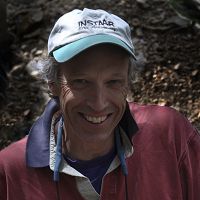Anderson, 2015
Pinched topography initiates the critical zone: Geophysical imaging provides a clearer picture of how rock turns into soil.
Anderson, R. S. (2015)
Science 350: 506-507
-
Boulder, INVESTIGATOR
Abstract
In Earth sciences, the critical zone represents the intersection of the biosphere with the atmosphere, hydrosphere, and lithosphere (1, 2). The myriad interactions and feedbacks among these systems assure us of a world with considerable complexity, in which the critical zone varies in thickness, mineralogy, permeability (3), and structure of ecosystems (4). It is no wonder, then, that we lack a general theory of how the critical zone works. On page xxxx of this issue, St. Clair et al. (5) argue that we must take the broadest possible view of, and acknowledge a role for, largescale tectonic stresses in guiding the pattern of cracking of rock in the subsurface.
See the below PDF.
Citation
Anderson, R. S. (2015): Pinched topography initiates the critical zone: Geophysical imaging provides a clearer picture of how rock turns into soil . Science 350: 506-507. DOI: 10.1126/science.aad2266
Associated Files
Explore Further

